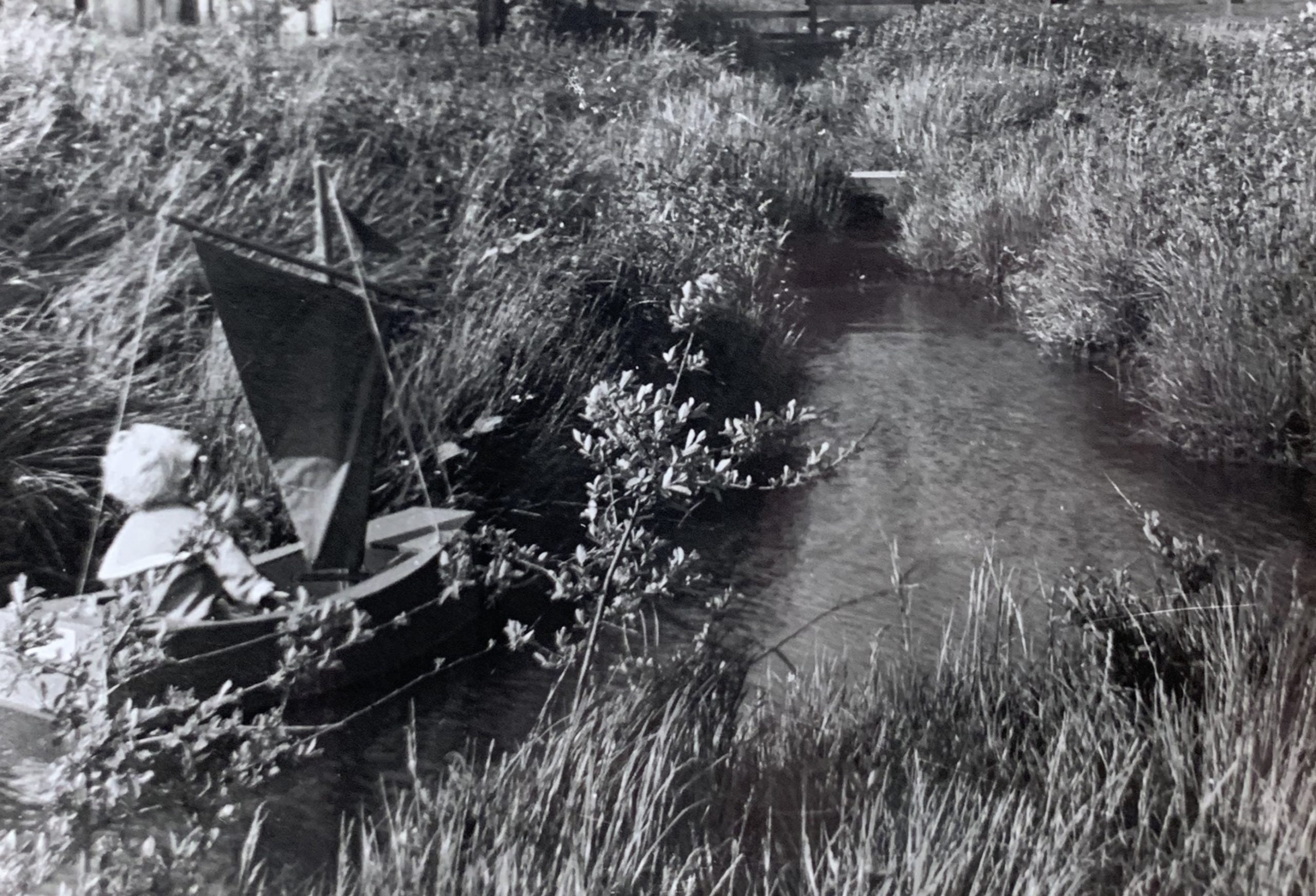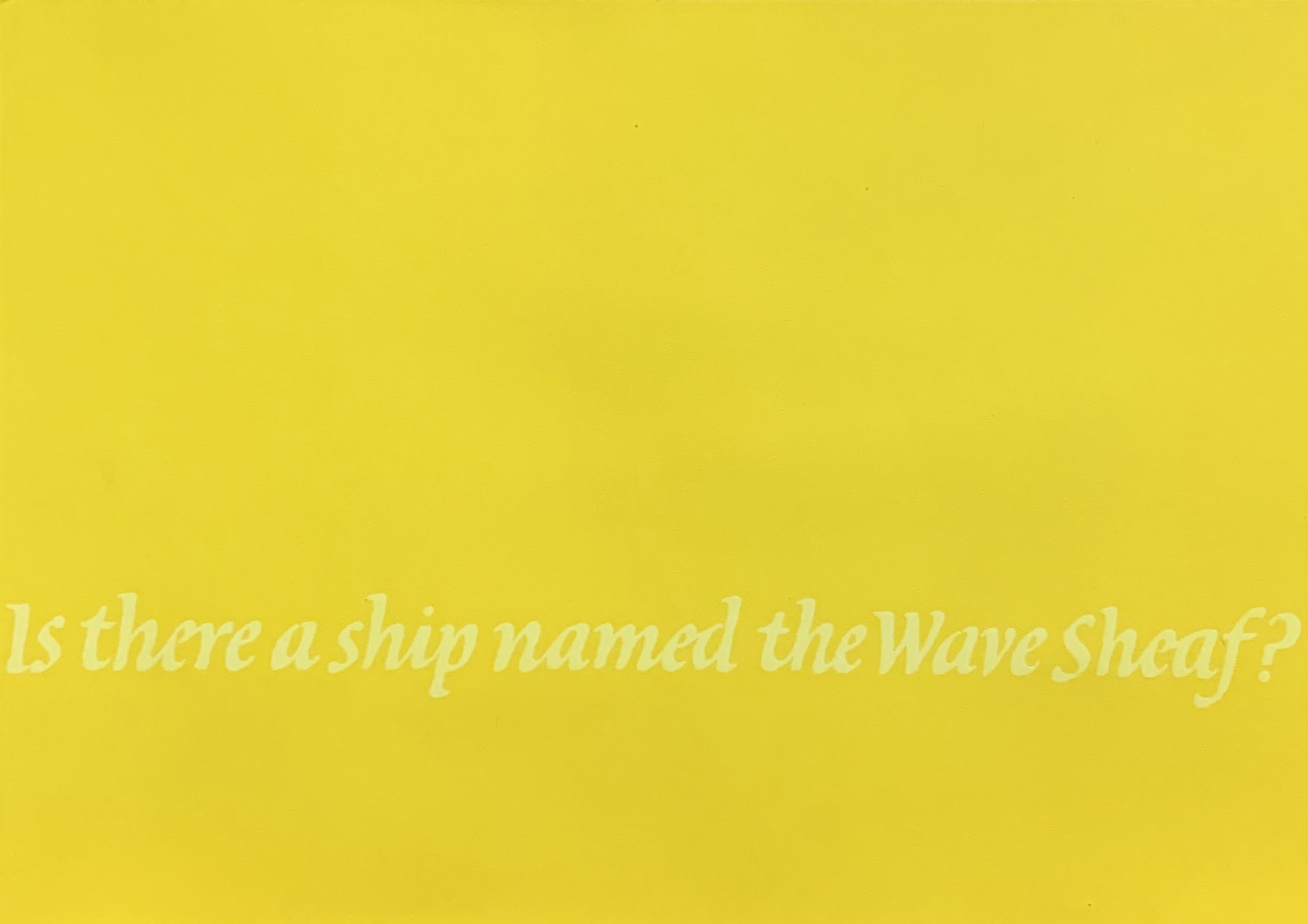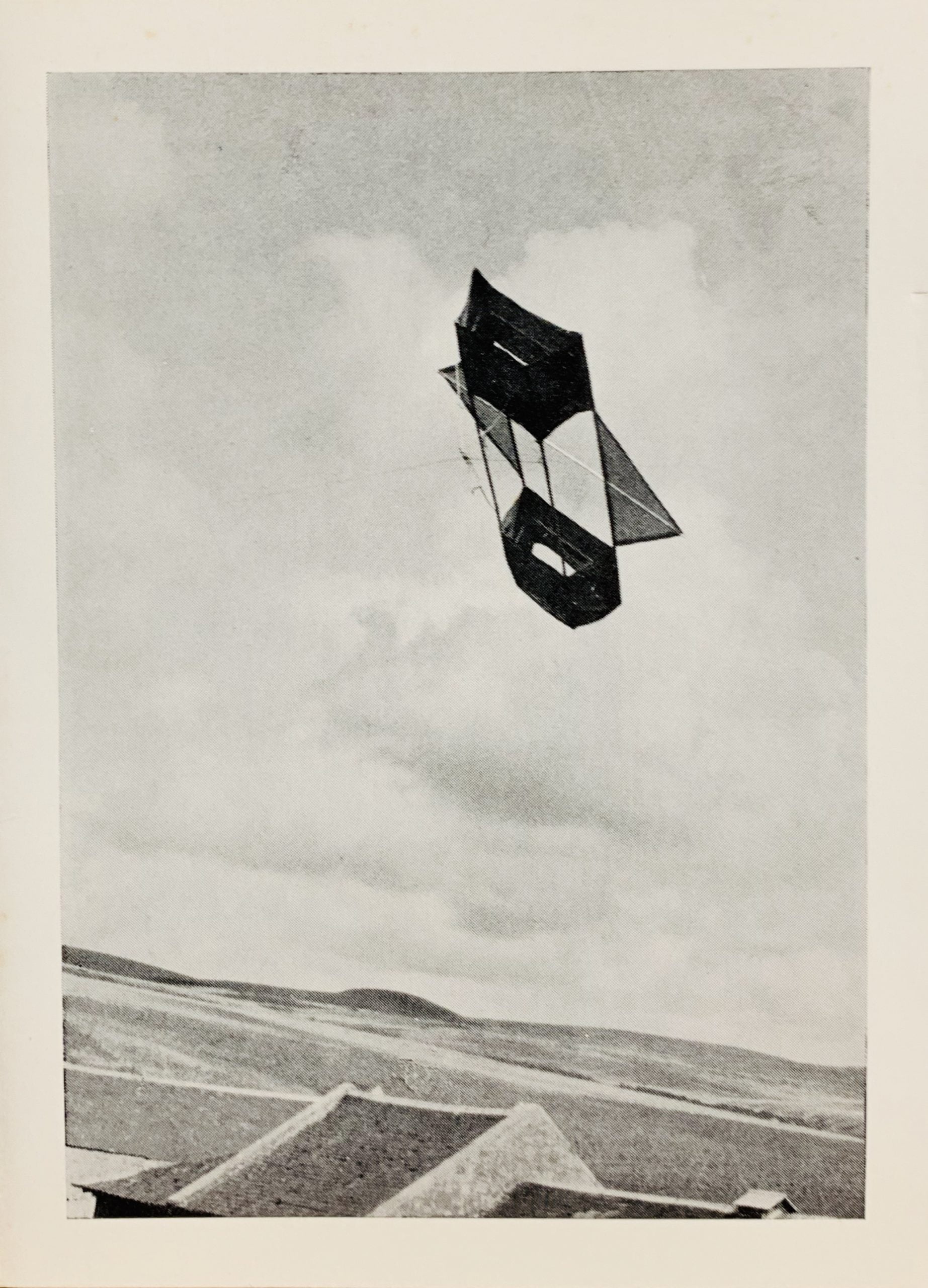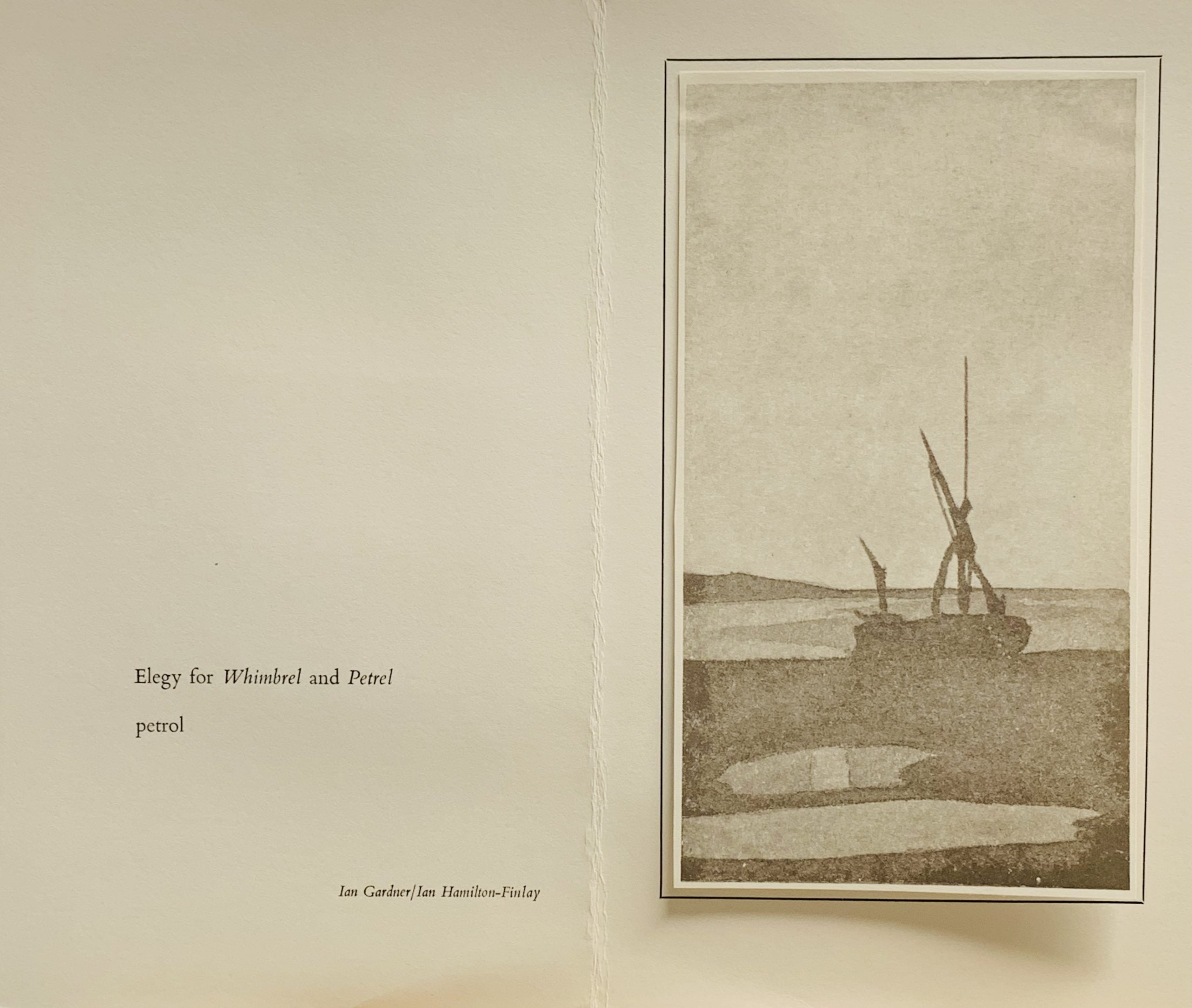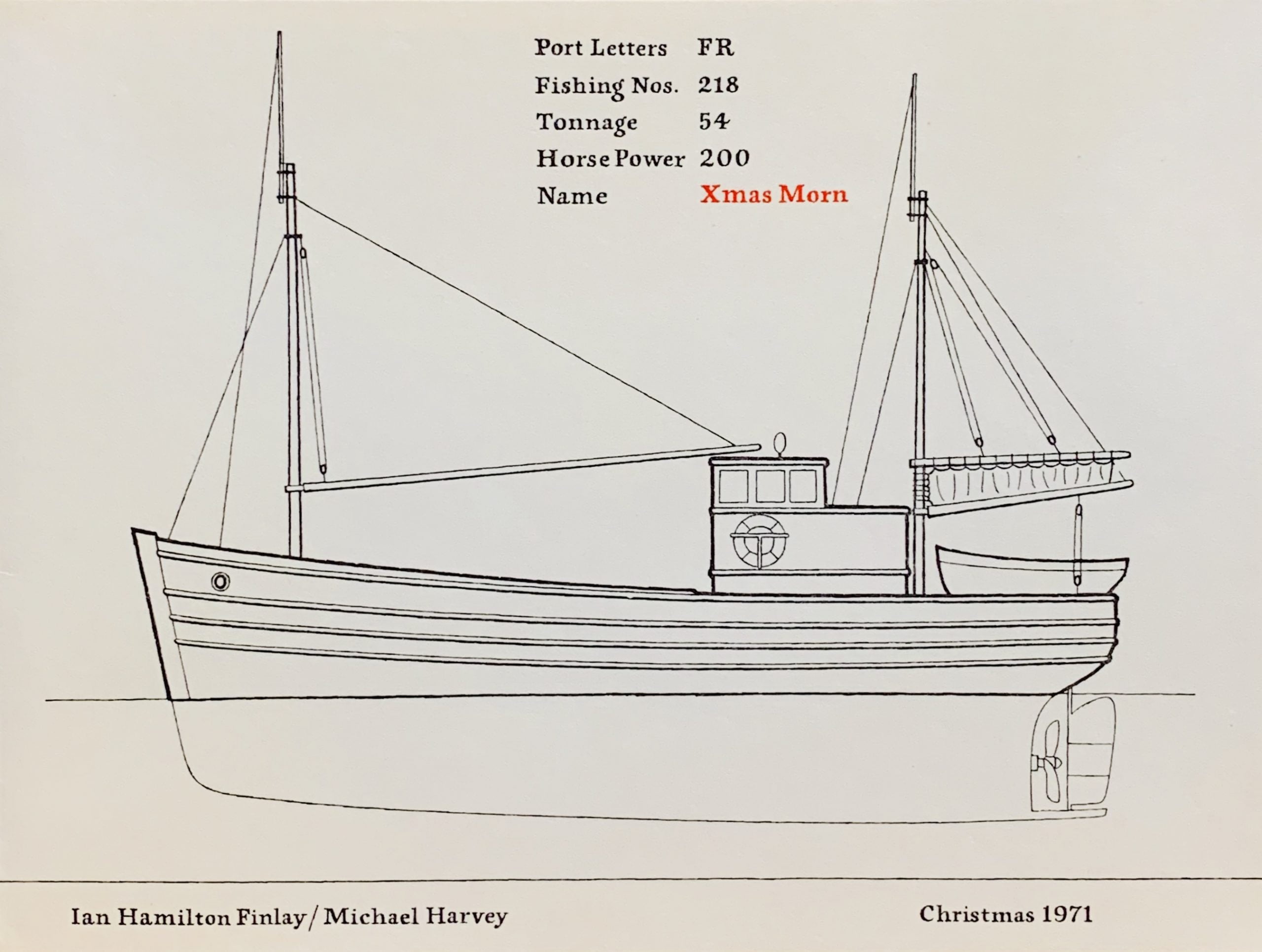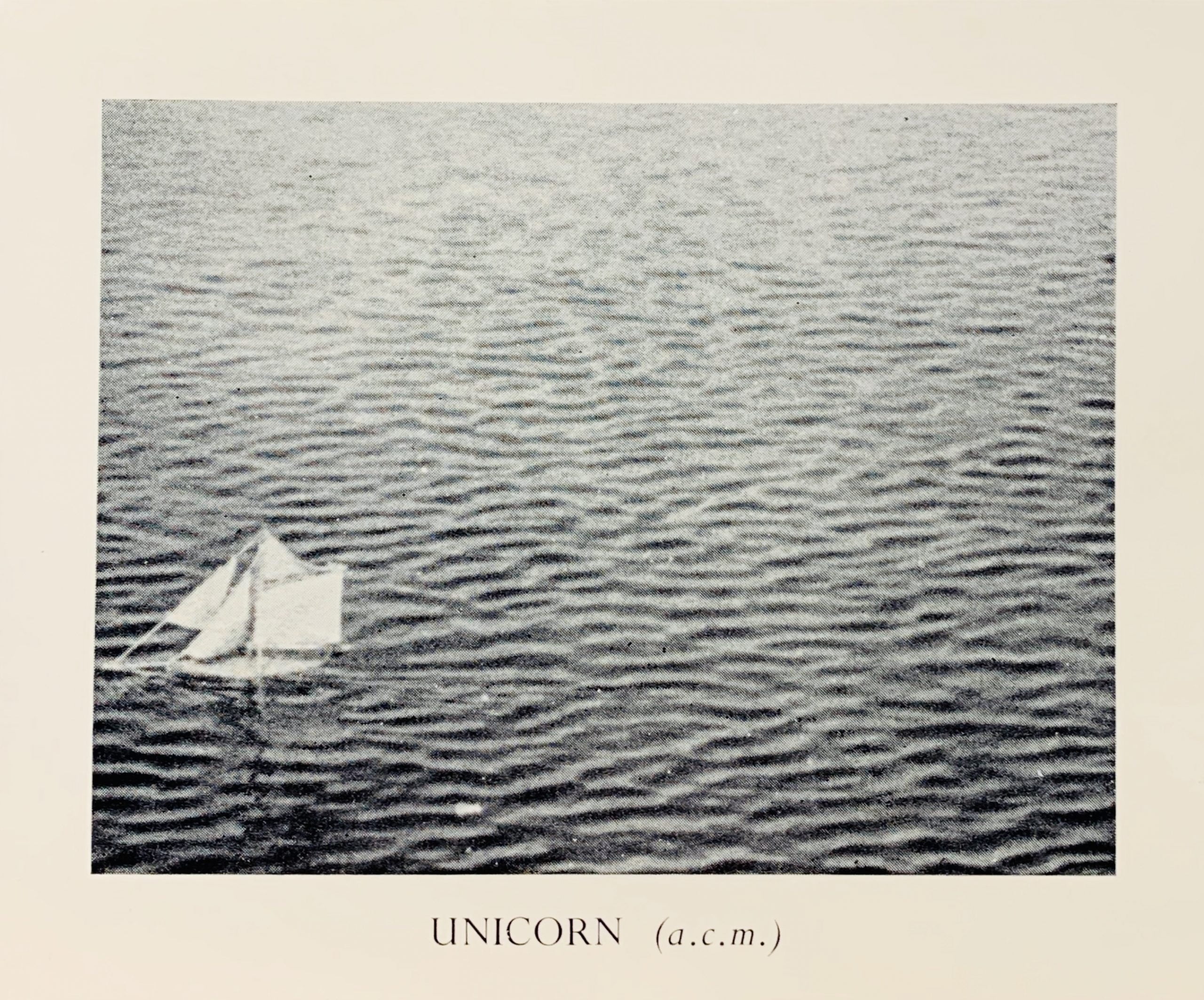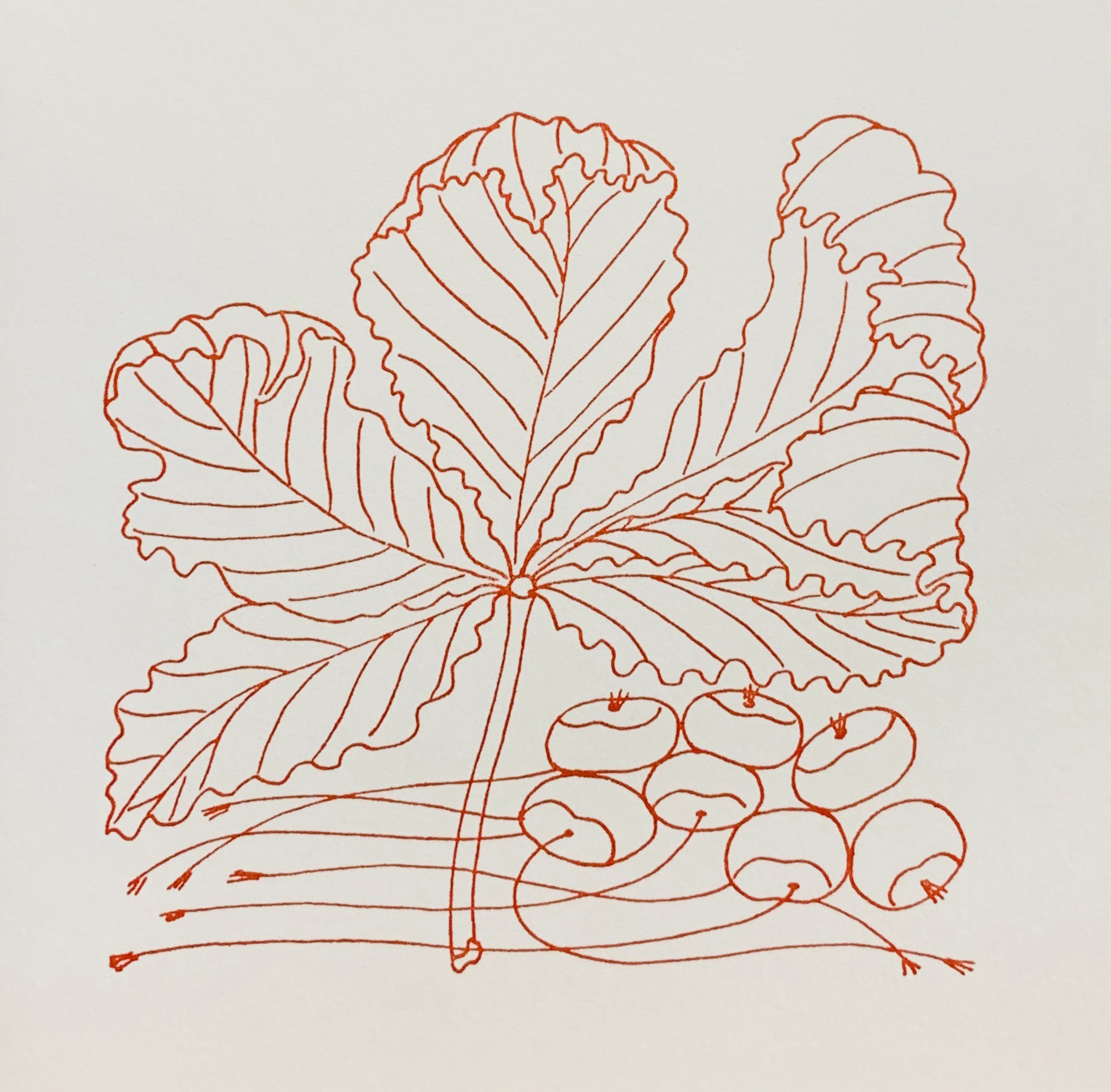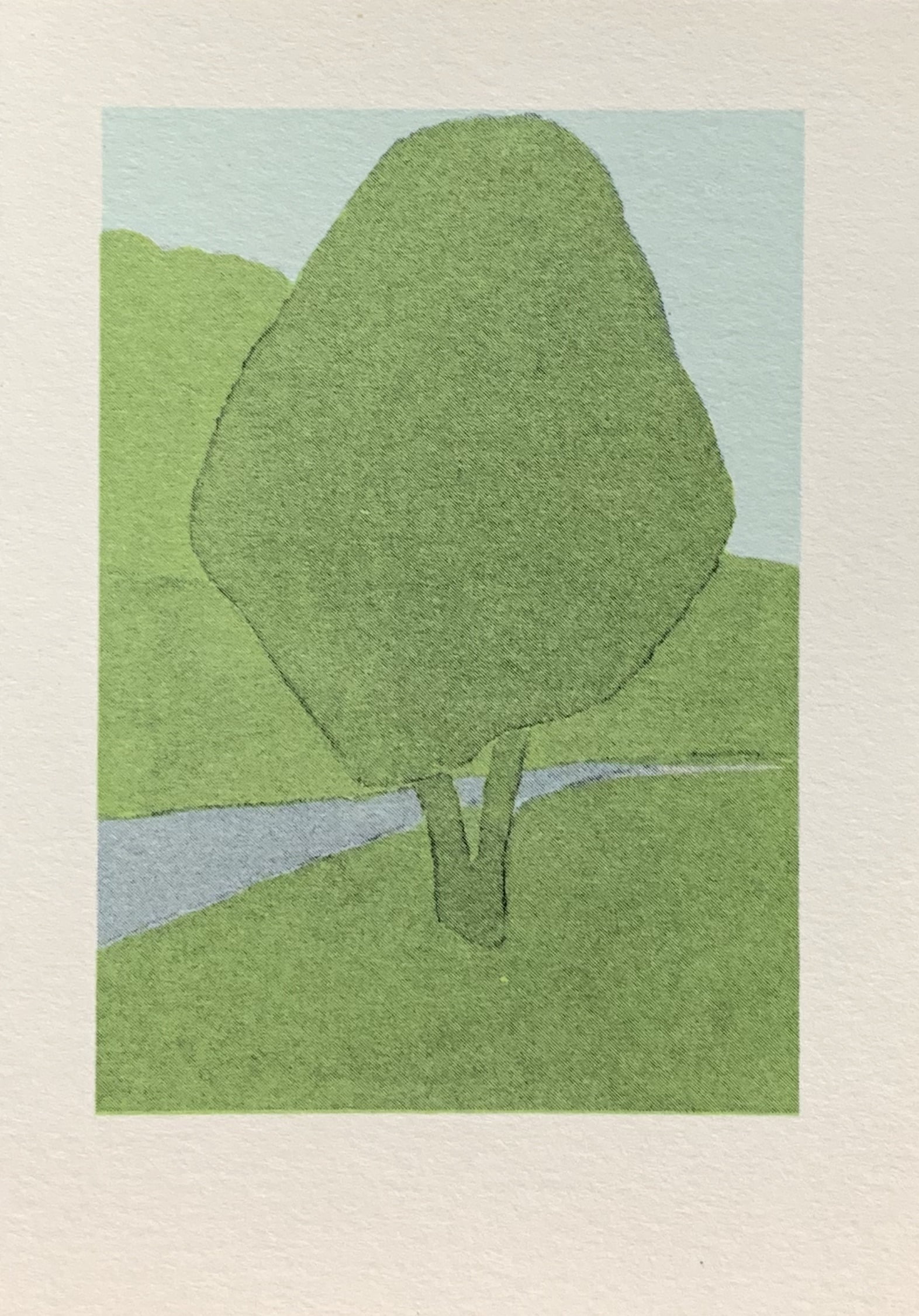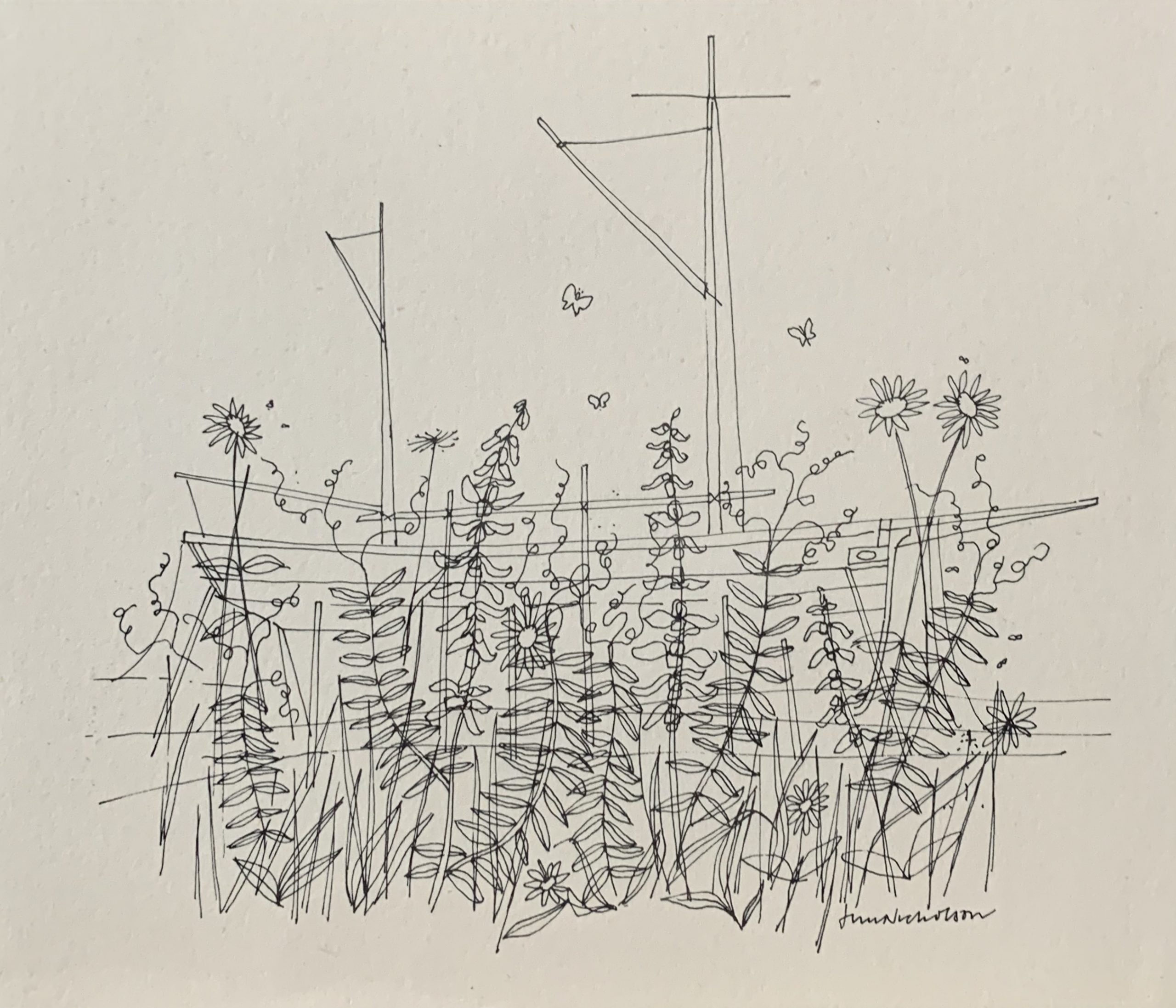20 Mar THE END. 1972.
Dunsyre: Wild Hawthorn Press, 1972
7.5 x 8.6cm, 6pp (single folded sheet printed only one side). One of Finlay's most accessible and popular cards, the images on both sides by Ian Gardner are very similar only one is a path leading to a house, the other a wake on water leading to a boat. The text in the middle tells a story in very few words: "They returned home tired by happy. The End." As with many of Finlay's card and prints that show returning boats this can be seen as a metaphor for the end of life or just the end of a nice tale. VG+
...



